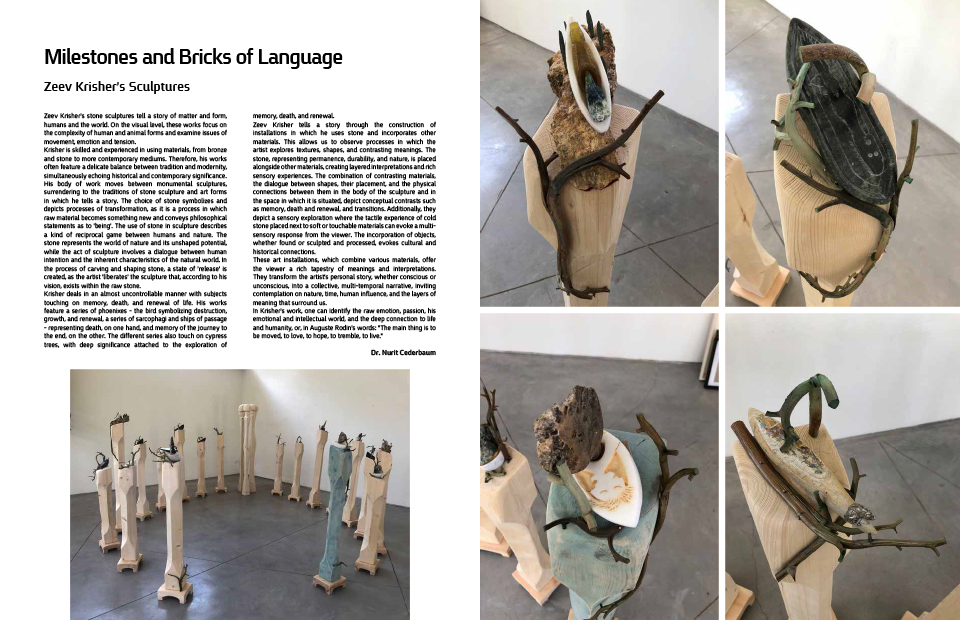
| Home Page | Editor Notices | Museums | Galleries | Publication | Donation | Contact Us |


 | |||||||||||||||
| |||||||||||||||


| |||||||||||||||
| Zeev Krisher's Sculptures |
Zeev Krisher's stone sculptures tell a story of matter and form, humans and the world. On the visual level, these works focus on the complexity of human and animal forms and examine issues of movement, emotion and tension. Krisher is skilled and experienced in using materials, from bronze and stone to more contemporary mediums. Therefore, his works often feature a delicate balance between tradition and modernity, simultaneously echoing historical and contemporary significance. His body of work moves between monumental sculptures, surrendering to the traditions of stone sculpture and art forms in which he tells a story. The choice of stone symbolizes and depicts processes of transformation, as it is a process in which raw material becomes something new and conveys philosophical statements as to 'being'. The use of stone in sculpture describes a kind of reciprocal game between humans and nature. The stone represents the world of nature and its unshaped potential, while the act of sculpture involves a dialogue between human intention and the inherent characteristics of the natural world. In the process of carving and shaping stone, a state of 'release' is created, as the artist 'liberates' the sculpture that, according to his vision, exists within the raw stone. Krisher deals in an almost uncontrollable manner with subjects touching on memory, death, and renewal of life. His works feature a series of phoenixes - the bird symbolizing destruction, growth, and renewal, a series of sarcophagi and ships of passage - representing death, on one hand, and memory of the journey to the end, on the other. The different series also touch on cypress trees, with deep significance attached to the exploration of memory, death, and renewal. Zeev Krisher tells a story through the construction of installations in which he uses stone and incorporates other materials. This allows us to observe processes in which the artist explores textures, shapes, and contrasting meanings. The stone, representing permanence, durability, and nature, is placed alongside other materials, creating layered interpretations and rich sensory experiences. The combination of contrasting materials, the dialogue between shapes, their placement, and the physical connections between them in the body of the sculpture and in the space in which it is situated, depict conceptual contrasts such as memory, death and renewal, and transitions. Additionally, they depict a sensory exploration where the tactile experience of cold stone placed next to soft or touchable materials can evoke a multi-sensory response from the viewer. The incorporation of objects, whether found or sculpted and processed, evokes cultural and historical connections. These art installations, which combine various materials, offer the viewer a rich tapestry of meanings and interpretations. They transform the artist's personal story, whether conscious or unconscious, into a collective, multi-temporal narrative, inviting contemplation on nature, time, human influence, and the layers of meaning that surround us. In Krisher's work, one can identify the raw emotion, passion, his emotional and intellectual world, and the deep connection to life and humanity, or, in Auguste Rodin's words: "The main thing is to be moved, to love, to hope, to tremble, to live." Dr. Nurit Cederbaum Read more  |
| all rights reserved - CAN ISRAELI ART REALITY |
| סייבורג מחשבים - בניית אתרים |